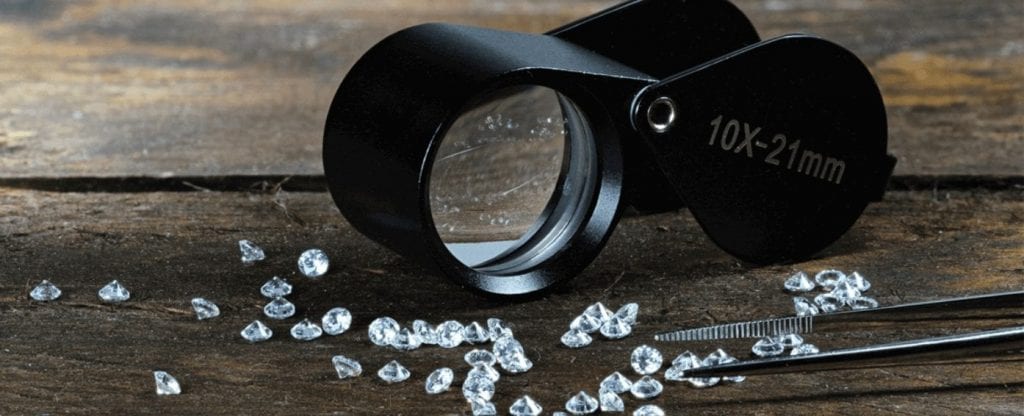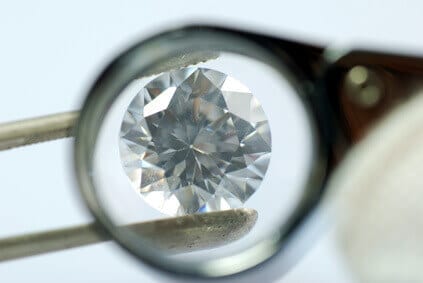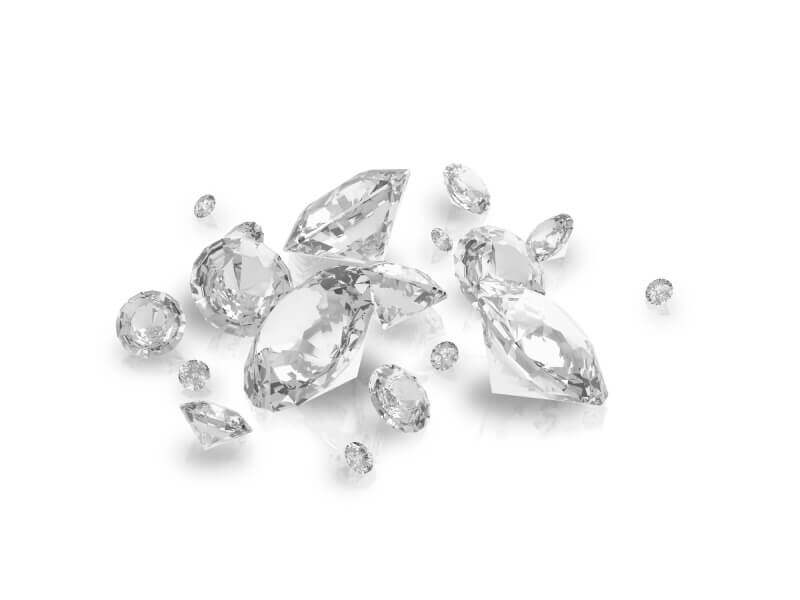
GIA laboratory issues diamond grading reports for loose, natural diamonds in the D-to-Z color range that weight 0.15 carats or more. GIA Diamond Grading Reports are not issued for diamond synthetics, diamond simulants, mounted diamonds or those that have undergone unstable treatments, such as fracture filling or coating. And while reports may be issued for diamonds that have been laser drilled or HPHT processed, reports will indicate that the diamond has been treated.
An evaluation of a diamond’s unique characteristics is a necessary part of any transaction whether one is buying loose stones, selling an engagement ring or shopping around for a gift. This is because a stone’s worth is attributed to the small features and nuances that set it apart from others. A diamond that has not been graded remains a mystery. While it may look beautiful, no one can know if it’s worth $1,000, $10,000, or more.
A diamond that has not been graded remains a mystery. While it may look beautiful, no one can know if it’s worth $1,000, $10,000, or more.
When met with a stone that has no credentials, is it possible to appraise its value with the naked eye? The short answer is no. There are many attributes that must be established: its color, clarity, size and weight, and cut. These traits are the “Four Cs”, and while some (like size) may be easier to eyeball, others might be more difficult.
Clarity is an important part of a diamond’s value, but to the naked eye, all but the most included diamonds appear stunningly clear. Included means that the diamond has inclusions, or blemishes, on its surface or interior.These impurities reduce the price tag of any stone by a large degree, and so buying or selling a diamond without a GIA (or GSI) grading of its clarity and other features means you might risk a significant sum.
To sufficiently evaluate all aspects of a diamond’s clarity, an array of equipment is required to discover the minute particularities of each stone. This is not possible with any degree of reliability using the human eye, and the bare minimum entails a jeweler’s loupe (a type of magnifying glass) used to magnifies unaided vision by ten times.
If you can view a stone from multiple angles at about a foot’s distance, and determine that it has no visible flaws, then the stone is defined as “eye clean”. This classification carries value, but observing a stone through a 10x jeweler’s microscope is more closely related to the eventual price of a stone. The clarity scale is one of the broadest spectrums that an individual will view on a GIA report, with 11 values ranging from flawless to I3 (lowest quality included).

Some inclusions are visible with the naked eye, but with a jeweler’s loupe, it’s possible to see microscopic specks, dark or cloudy areas or lines that would otherwise remain invisible. Magnification of 10x is the standard that jewelers use for this part of the appraisal, and diamonds that are clean per a quick evaluation with this tool are deemed extremely desirable, but rare.
Eyeballing a gem and using a standard loupe are great ways to identify discolorations and physical flaws, but inclusions can also be due to a small amount of a substance alien to the diamond’s natural carbon structure – like boron, hydrogen, or nitrogen. These can affect the diamond’s color, light refraction, and other qualities. To test for this, an additional set of equipment is required for further analysis.
For instance, a gemology refractometer is the perfect tool for revealing the inclusions that even a loupe cannot find. Diamonds are transparent, so light can be projected through them. Based on how the light bends, a refractometer determines the chemical composition of the stone. While it is nearly impossible to find a diamond that is 100% carbon, the refractive index will show just how close the diamond is to perfection.
Buying a diamond without its official grading report, and just relying on your eyes to determine quality puts you at risk of overpaying by a large degree. Sellers benefit from a thorough appraisal as well, as a quick checkup with a microscope could reveal inner qualities that justify a higher price tag.

However, it’s not just the natural traits of a diamond that need to be studied. Stones are also commonly tampered with in many ways, including drilling, bad inscription, color treatment and more. These may enhance the stone’s visual appeal but detract from its overall value. For these reasons and more, using Worthy to buy or sell loose stones or diamond jewelry is the most reliable method.
For these reasons and more, using Worthy to buy or sell loose stones or diamond jewelry is the most reliable method.
Each piece of jewelry that arrives for auction at Worthy is graded by GIA, the most trusted gem grading institution operating in the market. Besides testing for clarity, as discussed in this article, GIA will also evaluate your diamond for color, cut and carat weight. GIA gemologists utilize the most advanced equipment and objective scientific methods for determining the individual qualities of each gem, and Worthy lets these features inform potential buyers about prices exclusively. Buyers viewing your stone will be able to place bids confidently thanks to GIA’s authentication of a diamond’s quality.
©2011-2025 Worthy, Inc. All rights reserved.
Worthy, Inc. operates from 25 West 45th St., 2nd Floor, New York, NY 10036